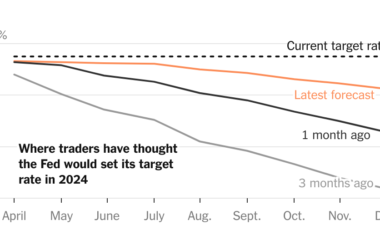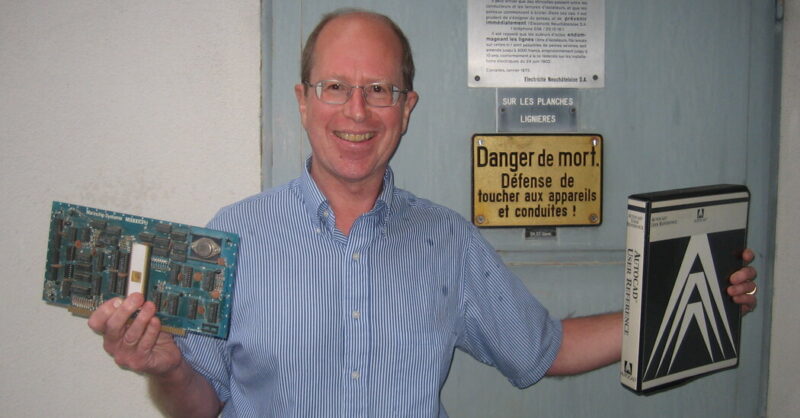John Walker, a groundbreaking, if reclusive, technology entrepreneur and polymath who was a founder and chief executive of Autodesk, the company that brought the ubiquitous AutoCAD software program to the design and architecture masses, died on Feb. 2 in Neuchâtel, Switzerland. He was 74.
His death, in a hospital, was caused by complications of head injuries he suffered in a fall at home, his wife, Roxie Walker, said. His death was not widely reported at the time.
Mr. Walker was well known in tech circles, not just for his triumphs in business but also for his outsize skills as a programmer — he was credited with developing an early prototype of the computer virus — and as a voluble writer who filled his personal site, Fourmilab, with free-ranging musings on topics as diverse as cryptography, nanotechnology and consciousness studies.
Although he had little taste for publicity, he became a prominent tech mogul of the 1980s and early ’90s as a founder of Autodesk Inc., once described as “a theocracy of hackers,” which grew to become the sixth-largest personal computer software company in the world.
In 1982, he pulled together 15 other programming mavericks to form Autodesk. The company’s original product was an office automation program by the same name, but it was a different software product the company introduced that same year that would send Autodesk into the tech stratosphere.
AutoCAD — the “CAD” stands for computer-aided design — was based on a program called Interact created by Michael Riddle, another company founder. With the contributions of Mr. Walker as well as Greg Lutz, who was also a founder, and the rest of the team, AutoCAD would go on to revolutionize industries including architecture, graphic design and engineering by allowing design professionals to ditch their pencils and paper and render their creations on a screen using an inexpensive personal computer.
“To him goes the credit for the Second Design Revolution,” the California software executive Roopinder Tara wrote in a tribute to Mr. Walker on the site Engineering.com. The “First Design Revolution,” as Mr. Tara called it, was the creation of earlier CAD programs that ran on expensive mainframes or minicomputers. But, he wrote, it was with AutoCAD, which “burst onto the scene in 1982, after the advent of the IBM PC, that the computer actually started to deliver on the promise.”
Despite the technological advances of AutoCAD, Mr. Walker was uncertain at first about the product’s commercial potential because of its seemingly limited pool of users. “I mean, just compare the number of architects with the number of people that write documents,” he said in a 2008 interview published by the site Through the Interface.
“We had the same opinion as the rest of the industry did,” Mr. Walker said, “that it’s a niche product.”
His skepticism quickly dissolved when the company introduced the program at the Comdex tech trade show in Las Vegas in 1982 to a rapturous response. “From the day this show opened until the day it closed,” Mr. Walker said, “the booth was absolutely jammed; you couldn’t get in there. There were lines of people waiting to see it.”
John Wallace Walker was born on May 16, 1949, in Baltimore, the elder of two sons of William Walker, a surgeon, and Bertha (Bailey) Walker, a surgical nurse.
Declining to follow the family tradition and pursue a career in medicine, he attended Case Western Reserve University in Cleveland, where he initially studied astronomy.
Once he started working in the university’s computing center, however, his course became clear. Not long after graduating with a bachelor’s degree in electrical engineering, he met his future wife, Roxie Smail. The couple married in 1973 and soon headed for California, where Mr. Walker had been offered a job at a computer services company, and settled in Foster City, south of San Francisco.
A first-generation hacker, Mr. Walker made waves in 1975 by creating a self-replicating version of a 20 Questions-style computer game called Animal, designed for giant Univac mainframe computers, along with a companion program, Pervade, to spread it.
As programmers around the country passed around magnetic-tape copies of his game, the only way possible in those pre-internet days, it quickly “spread into successively more protected directories in what today is called a ‘classic Trojan Horse attack,’” Mr. Walker wrote in a 1996 recollection on his site. “In 1975, when I thought of it, I just called it ‘a neat idea.’”
A year later, he got a taste of entrepreneurship when he founded a company called Marinchip Systems, built around a circuit board he designed that was based on the Texas Instruments TMS9900 microprocessor.
But it was with Autodesk that he would ascend to the upper rungs of the industry. Originally based in Sausalito, Calif., in the Bay Area, it mushroomed into a multibillion-dollar company with thousands of employees.
The idiosyncratic Mr. Walker put his mark on a company that was anything but corporate in spirit. A 1992 article in The New York Times described Autodesk under Mr. Walker as “a cabal of counterculture senior programmers” who “took their dogs to work and tried to reach a consensus on strategy through endless memos sent by electronic mail.” (In those days, email was still a novelty in the business world.)
That same year, The Wall Street Journal scored a rare interview with Autodesk’s “founding genius.” The resulting article noted his quirks, including the fact that he did not allow the company to distribute his photograph in any form. He was prickly in manner during the interview, the reporter noted, and insisted that it be conducted in front of a video camera, debated each question and claimed a copyright on the conversation.
By that point, Mr. Walker was no longer running the company. Having shepherded the business from a plucky start-up to a Silicon Valley powerhouse, he grew weary of day-to-day management and stepped down as chief executive in 1986, a year after the company went public. He moved to Switzerland in 1991, where he continued to work for the company as a programmer with its advanced research and development division, until 1994.
In addition to his wife, he is survived by his brother, Bill Walker.
Outside the corporate world, Mr. Walker churned out articles on all things tech-related for Fourmilab, in addition to posting original science fiction stories, recipes with names like “Hackeroni and Cheese” and a book called “The Hacker’s Diet: How to Lose Weight and Hair Through Stress and Poor Nutrition.”
As for life at the upper rungs of the tech industry, he showed little nostalgia.
“In 1977, this business was fun,” Mr. Walker wrote in a book-length history of Autodesk that he published on his site. “The sellers and the buyers were hot-shot techies like ourselves, everybody spoke the same language and knew what was going on.”
“Today,” he added, “the microcomputer industry is run by middle-manager types who know far more about P/L statements than they do RAM organization.”




